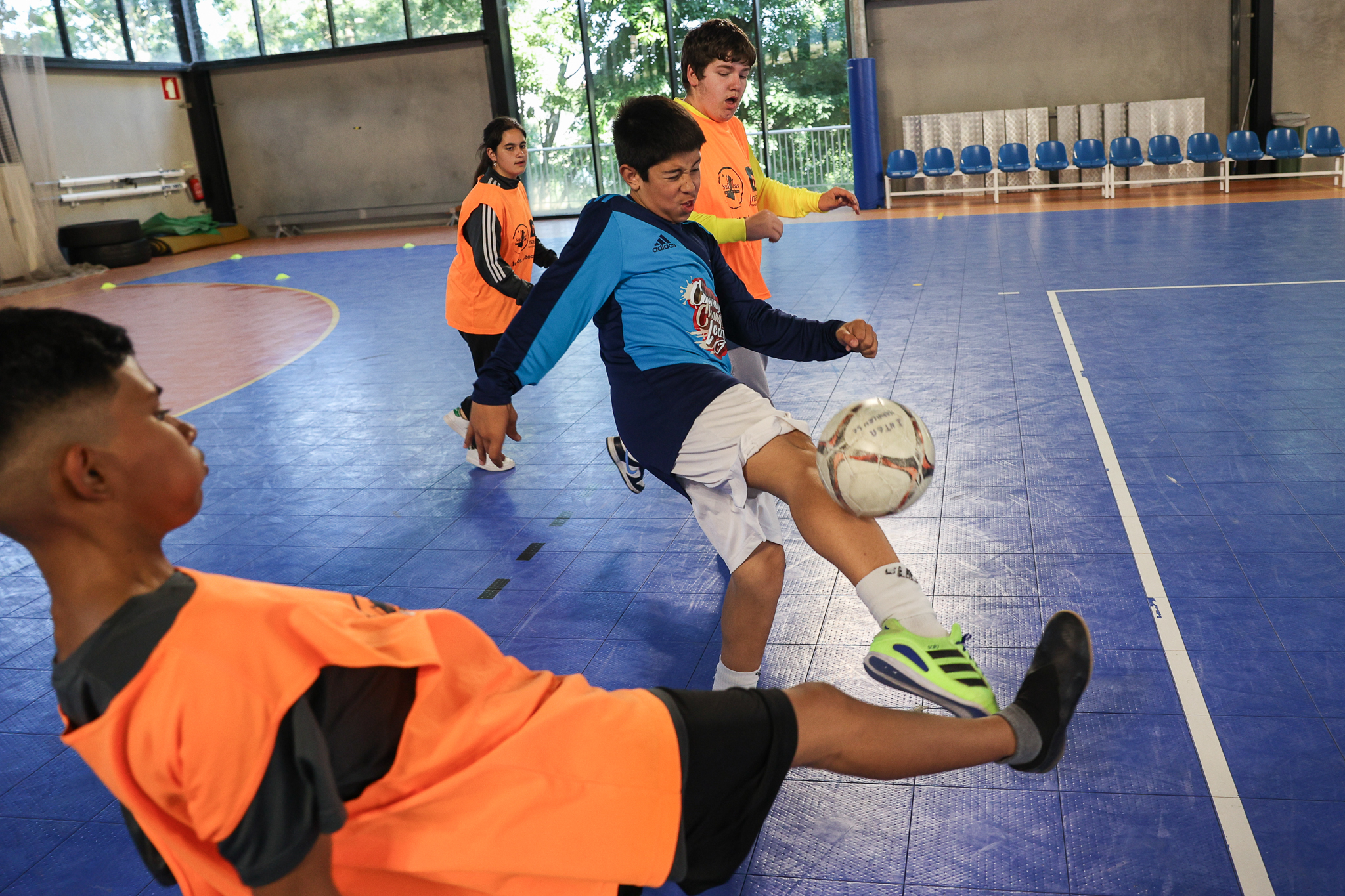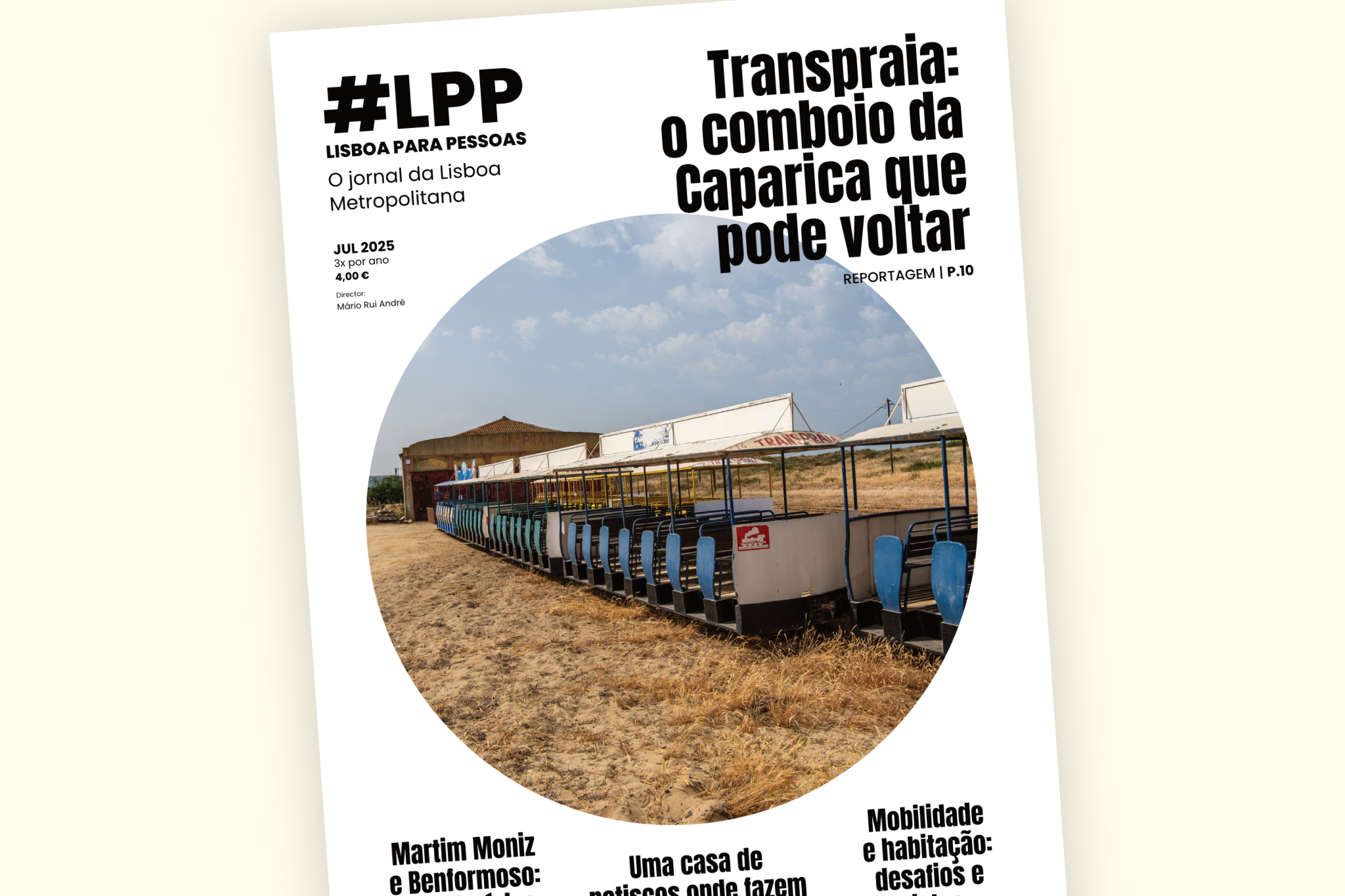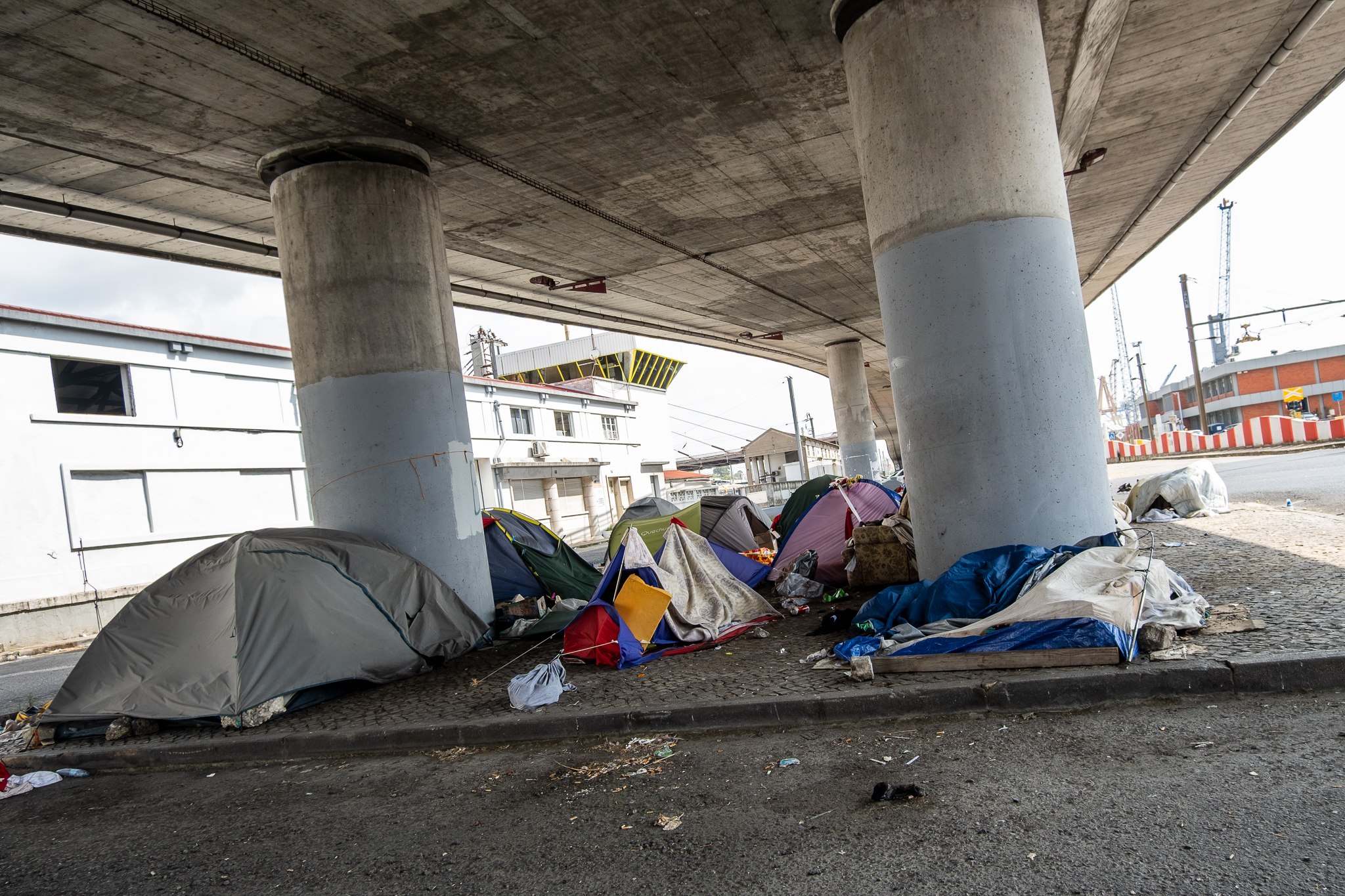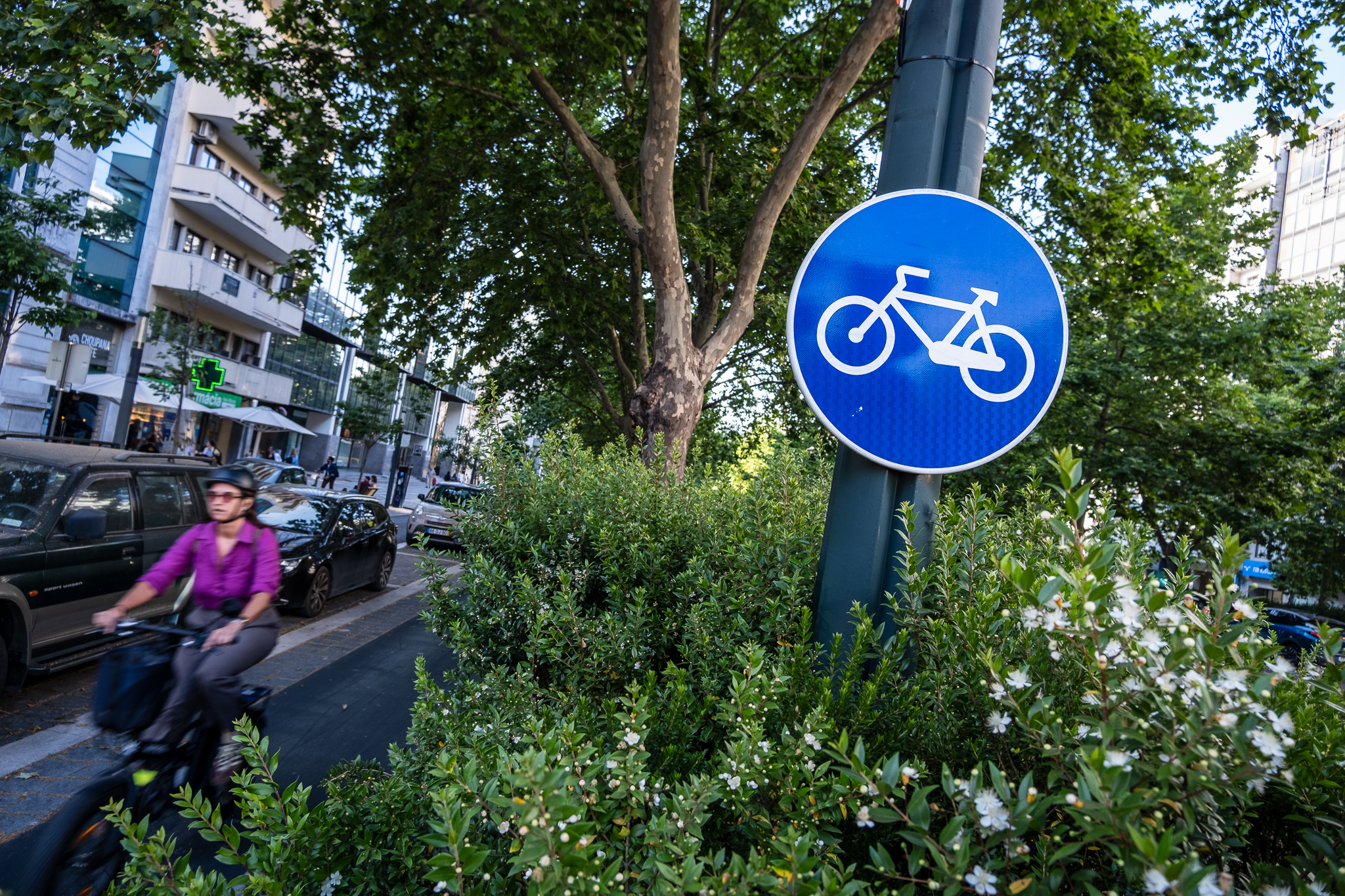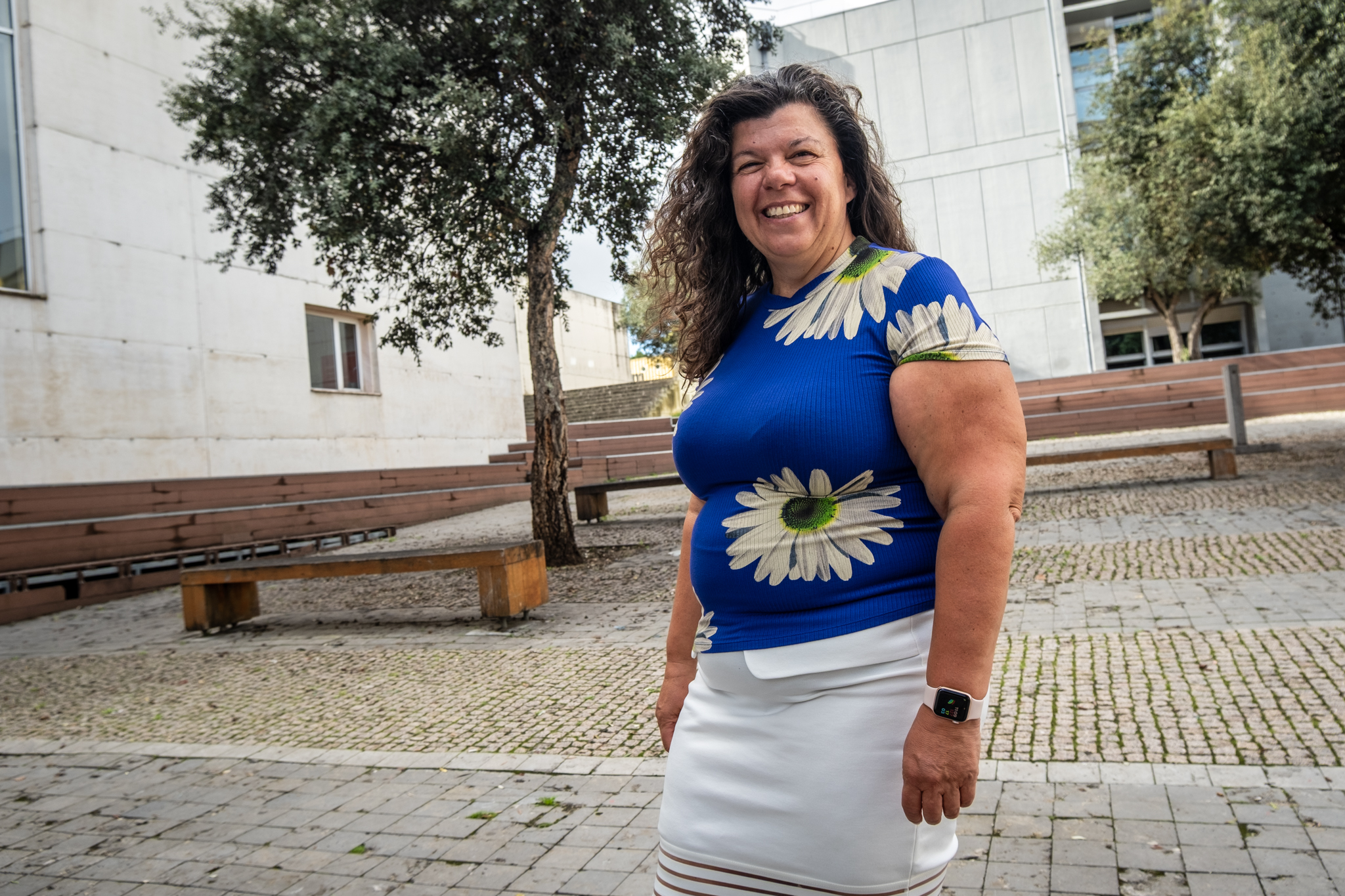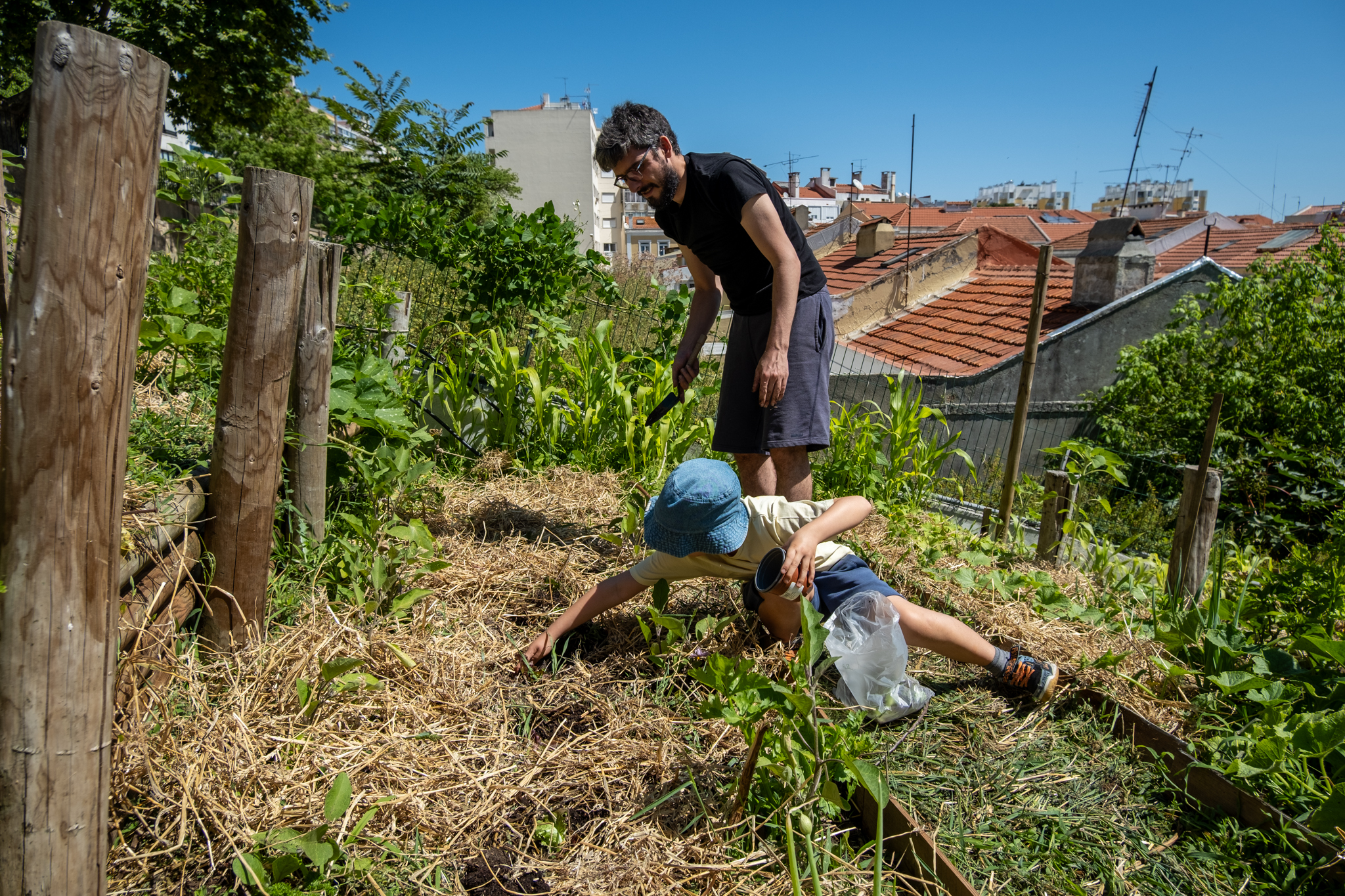This past school year, nearly a hundred children went to school by bus, accompanied by adult monitors. The pilot project, called Amarelo, covered schools in Olivais and Benfica, and is now being evaluated for the next school year.

Many of the older generation remember walking or taking the bus to school as children. These moments were opportunities for conversation and for forging closer friendships. The mobility paradigm has changed: today, more than 45% of Lisbon's primary and secondary school pupils drive to school every day. The company of peers has been replaced by that of parents, who, for their part, have the opportunity to spend time with their children, to have small family moments.
Data from the latest school mobility surveyThe survey, which is promoted annually by the Lisbon City Council, shows that private school pupils are the ones who travel to class by car the most (72% versus 34%). The bus is the preferred mode for 17% of the 39,000 students who participated in the survey, about half of the city's school population; looking at public schools alone, the percentage rises to 23%; in private schools, it represents only 5.1%. It is also important to look at the bus services offered by educational establishments - they represent 1.3% of total travel, with a slightly higher percentage in the case of private schools.
The incidence of car use decreases with increasing educational attainment. Older pupils are less likely to drive to school and, having already gained mobility independence, more likely to use public transport. In secondary education, the bus accounts for 30% of school trips, with the car accounting for only 28%. By comparison, in the 1st cycle, the car has 52% and the bus only 10%.
Lisbon is trying to reverse these patterns. The municipality, together with CarrisIn the academic year just ended, the Commission launched a pilot project aimed at the public of the 1st cycle. Through the existing supply of Carris busesand in particular the Neighborhood Carriers, nearly a hundred pupils from 1st to 4th grade were able to go to school by bus, accompanied by adult monitors.. The pilot project, entitled YellowThe project covered nine schools, four of which were in the parish of Olivais and five in the parish of Benfica.
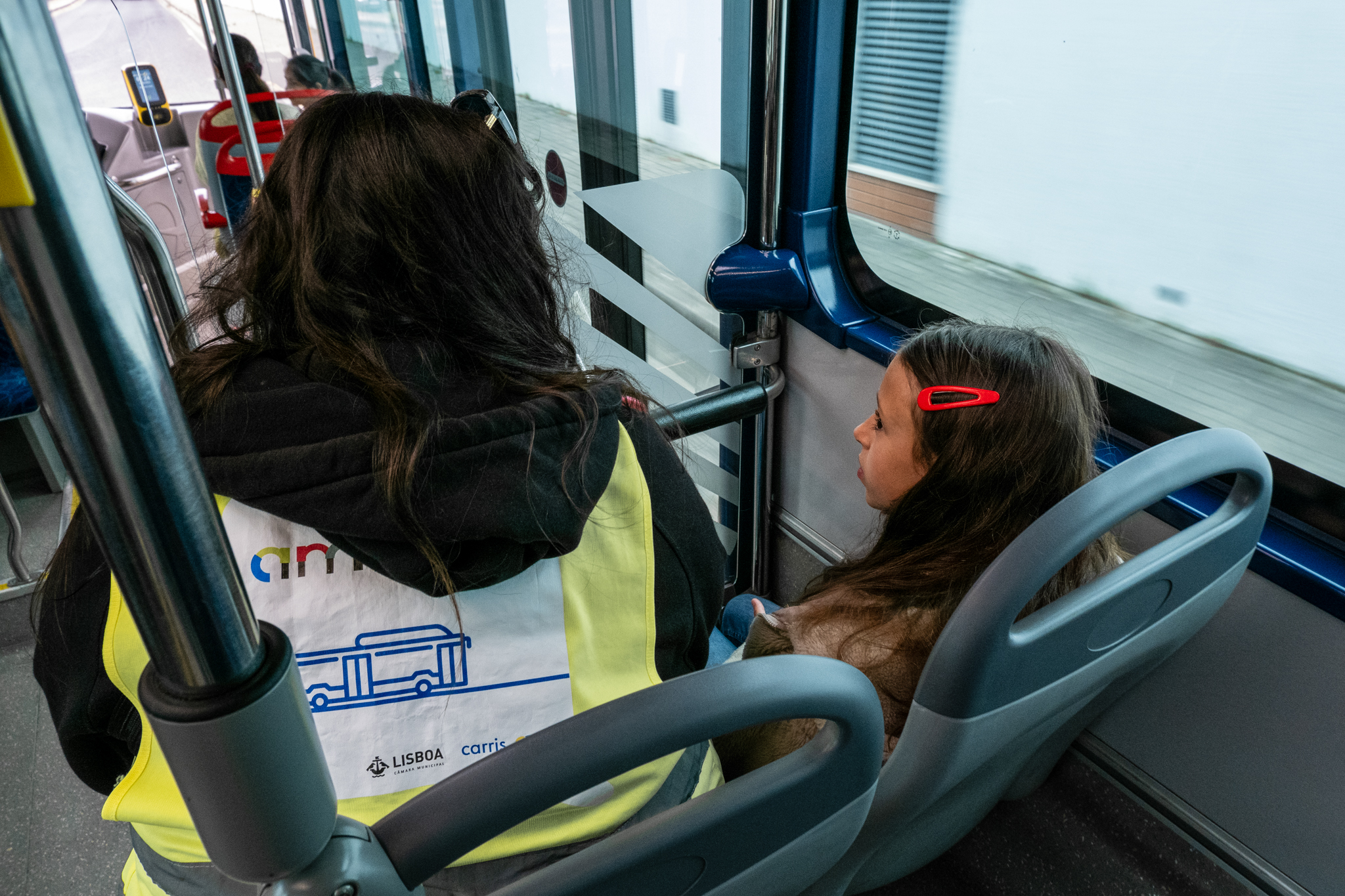
According to data from Carris, released in March, the Yellow had at that time 73 pupils enrolled, of whom about half used the service daily. The greatest success of the project was in the parish of Olivais, where there were 48 participants from three 1st cycle schools: Paulino Montez, Viscondessa dos Olivais and Arco Íris. In this parish, the Carreira de Bairro 29B served as support for the project. In Benfica, 25 children from three schools participated: Jorge Barradas, Parque Silva Porto, Pedro de Santarém and Professor José Salvado Sampaio. Here, the project took place at Carreira de Bairro 70B and on line 724.
Laura and Manuel were two of several children who took part in the event. Yellow this school year and who went by bus every day to their school, EB1 Jorge Barradas, in Benfica. At the appointed time, Laura and Manuel were at their respective 70B stop waiting for the bus, accompanied by their parents. Inside the bus, there was a monitor from the Benfica Parish Council ready to pick up the children. Wearing a yellow vest, Carolina always has her cell phone in her hand and keeps an eye on the WhatsApp group through which she communicates with the parents. If there is a delay or a postponement of the bus, Carolina notifies the parents and vice versa - if the children are late and not at the stop at the scheduled time, the parents notify the monitor who is on board (and, when this happens, the bus can wait for a while at the stop).
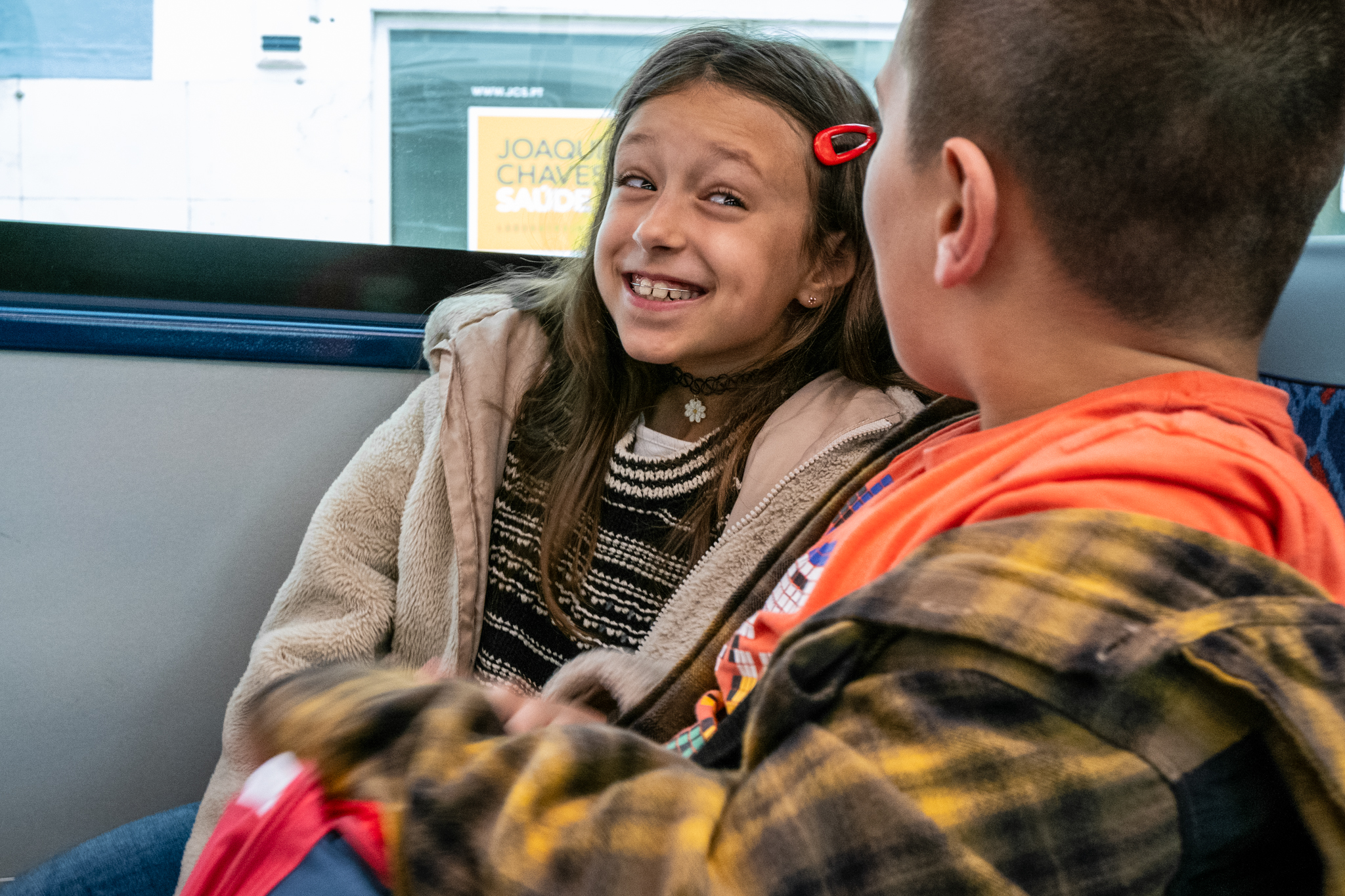
O Yellow operates on the normal Carris service, so children travel on the buses together with the rest of the bus passengers. So, by hypothesis, parents could simply leave their children at the stop and they would travel on their own; but the fact that there are adult monitors on board, trusted by parents and the children themselves (the monitors already accompany pupils on extra-curricular activities in schools), is a respite and a guarantee of safety.. On the eve of each circulation, the monitors ask in the WhatsApp group with the parents which children are going by bus the next morning - this is just to have an organization of the route and the stops where they will have to be more attentive. The group is used for other types of communication, such as notifying of events, problems or clarifying doubts that may arise - the operating model of the WhatsApp group is the same. Yellow is similar to the Bicycle Trains, where there is also use of WhatsApp.
The journeys of Yellow can be used for children to talk and play with each other, as Laura and Manuel did on the journey we followed in the final stretch of the school year. The monitors also play an active role in the social dynamics of the trips; because they know the children and the children them, organic conversations end up taking place, which makes going to school more fun.
On the day we accompanied the YellowOnly two of the seven children registered for the route took the bus. This school mobility project has not yet had an extraordinary uptake, but it is still a pilot. However, at EB1 Paulino Montez, in Olivais, alone, there were 32 children enrolled in March - this was the school with the most participants in the entire school year that has now come to an end. The Lisbon City Council and Carris are now analyzing the expansion of the initiative for the 2023/24 school year.
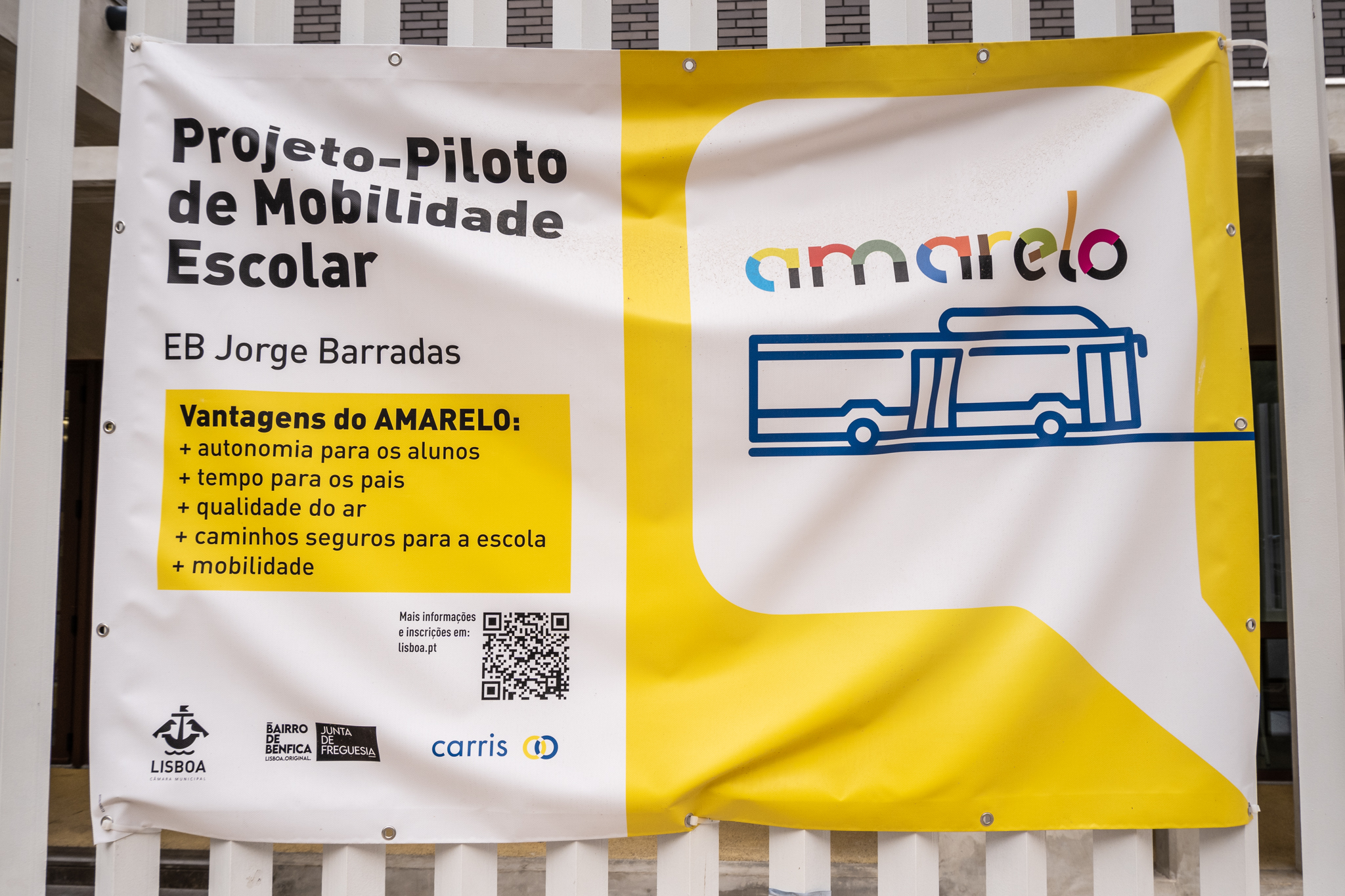
O Yellow joined as stakeholders the Municipal Directorate of Mobility, responsible for the general coordination of the project, Carris, which operates the transport service, the parish councils, which recruited and managed the monitors and, consequently, all the coordination with the participants' parents, and the schools, which helped to communicate the service to parents. Participation in the project always depended on registration. on the project page on the Chamber's websiteThis was the first time that parents could consult the list of participating schools as well as the maps and timetables of the routes. At the time of registration, parents only had to indicate their child's choice and the desired stop, and then be with the child at that location shortly before the bus passes. Yellow journeys are free, as all children up to the age of 12 are entitled to a free Navegante Metropolitano pass and, from that age onwards, benefit from the free transport measure of the city of Lisbon.
According to Carris, the parishes and schools selected were based on the results of the surveys. surveys carried out by the municipality, the existing coverage by Carris in the schools' catchment area, and the interest of schools and parish councils in promoting public transport, among other factors. In this first school year, the aim was to test the operationalization of the initiative and to attract passengers on home-school journeys, as well as to improve pedestrian routes between stops and schools. Carris says that it has created a new stop on the 70B route to improve accessibility to EB1 Parque Silva Porto and that it has also reinforced the service of this specific route; a stop on the 29B route has also been changed to improve accessibility to EB1 Paulino Montez.
O Yellow resulted from proposals made by the PCP and Livre in the Lisbon City Council; the idea behind the project is to encourage the use of existing public transport to go to school, promoting children's autonomy and confidence in their journeys and trying to reduce some of the car congestion on the way to school.

